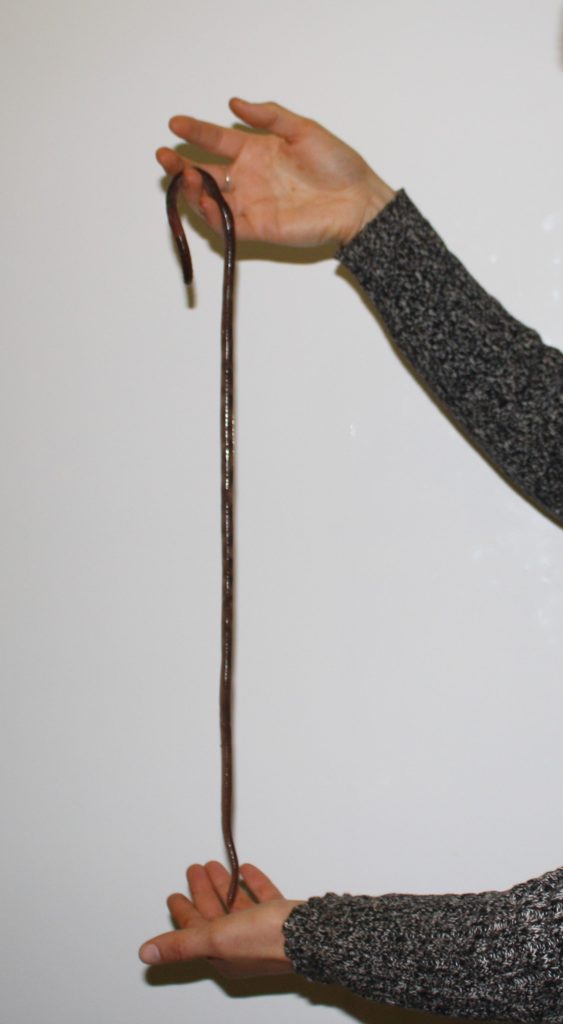We usually associate earthworms (terrestrial Oligochaetes) with moist soils in areas which have a reliable rainfall, but as a surprising recent encounter has shown, this is not always the case.
The country around the town of Broken Hill in western New South Wales does not look like earthworm territory. The area has an average annual rainfall of around 260 mm and in some years, it can be considerably less than that. This distinctly semi-arid landscape, dominated by chenopod shrubland consisting of saltbush (Atriplex) and Bluebush (Maireana), appears inimical to earthworm colonisation. And yet, as the manager of a property near the town discovered, they can survive and even make a momentary appearance, if conditions are just right.
Australia is richly endowed with earthworm biodiversity, with some 750 named species across a wide variety of habitats including rainforest, coastal dune systems, tall forests, wetlands and alpine woodlands. As sampling across the continent has been far from comprehensive, it is likely that many more await discovery. Of the thousands of recorded earthworm localities, very few occur outside the 400 mm rainfall isohyet.
The new Broken Hill species is not only sufficiently different anatomically and remote from other Australian earthworms, so as to warrant erection of a new genus (Aridulodrilus), but its occurrence in such a low rainfall environment is also highly unusual. Up to 1.5 metres long when fully extended, it may not be in the same league as other large Australian species such as the giant East Gippsland worm, (Megascolides australis) but is nevertheless quite distinctive. The name Aridulodrilus molesworthae not only acknowledges the species' unique environment but also recognises Ms Molesworth.

The new species can be observed crawling on the soil surface at night after rare heavy rainfall events, but only in a confined area (10 hectares) of the property. On these occasions brief encounters of individuals also permit copulation to take place. Why Aridulodrilus occurs in this one locality and not elsewhere (as far as we know) remains a mystery. It may be that the water table is higher here and the earthworms can survive at or above its capillary fringe, with behaviours governed by fluctuations in the level of the table and by rainfall events that temporarily saturate the upper soil layers.
It also appears to be part of a category of earthworms whose diet consists largely of soil microbiota, rather than being heavily reliant on organic materials present on the ground surface or in upper soil layers. This would render it better adapted to survival in a situation where prolonged dry spells would preclude access to surface food sources.
Earthworms and their ancestors have been part of terrestrial ecosystems for a very long time, perhaps 200 million years or more. They would have existed before the supercontinent Pangaea began to first break up into Laurasia and Gondwana, and were later transported on the various fragments of these bodies. The earthworms occurring in the part of Gondwana which we now call Australia have survived and diversified through a very long history of geologic and climatic change.
The last significant drying period in Australia during the late Miocene (from about 10 million years ago) likely precipitated a retreat of mesic vegetation and its associated fauna, including earthworms, to wetter coastal areas and the major river systems of the continent. This climatic shift may have been sufficiently gradual to allow isolated earthworm populations to persist within drier environments where the required set of soil, topographic and groundwater factors intersect. The Broken Hill earthworm, a serendipitous find in an unexpected location, may be an example of such a survival.
